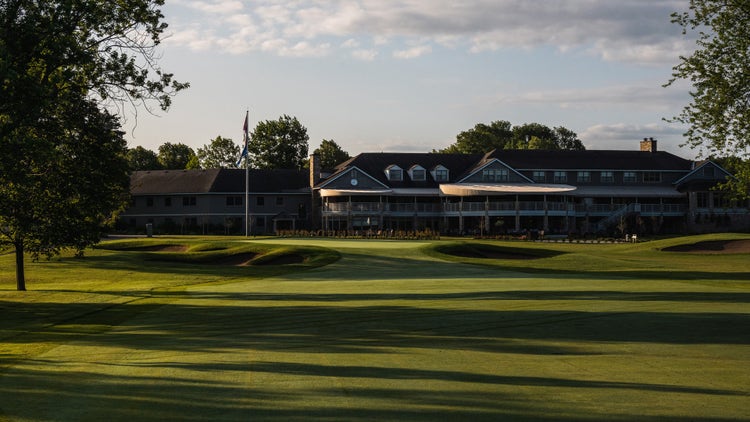
The Royal Montreal Golf Club
Montreal, Quebec, Canada
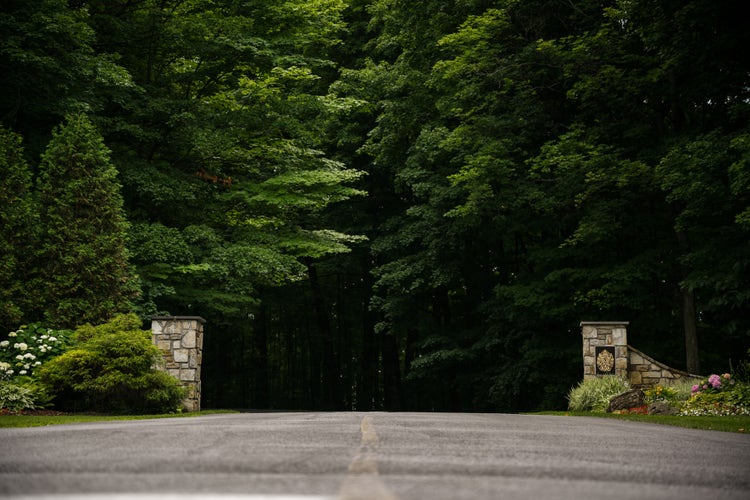
7,279 yards, Par 70
The Royal Montreal Golf Club, the oldest golf club in North America, will again be the site of history, as host of the 2024 Presidents Cup. It is the second time in which the storied club will host golf’s premier team event, having last done so in 2007, when the United States and captain Jack Nicklaus defeated Gary Player and the International Team, 19.5-14.5.
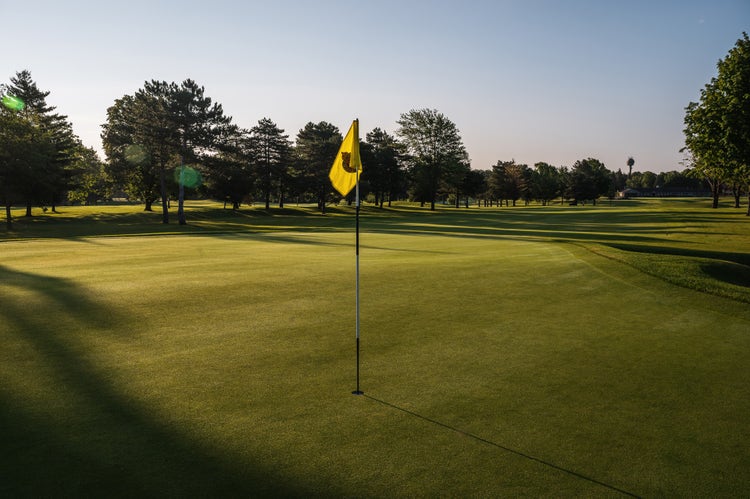
HOLE #1
This hole is a slightly uphill dogleg to the left. The left side of the fairway is bunkered and a long carry at 320 yards. The green is kidney-shaped, narrowing at the front. The back left plateau of the green slopes away from incoming approach shots.
PHOTO BY MATT GARIES
Par 4
449 yards
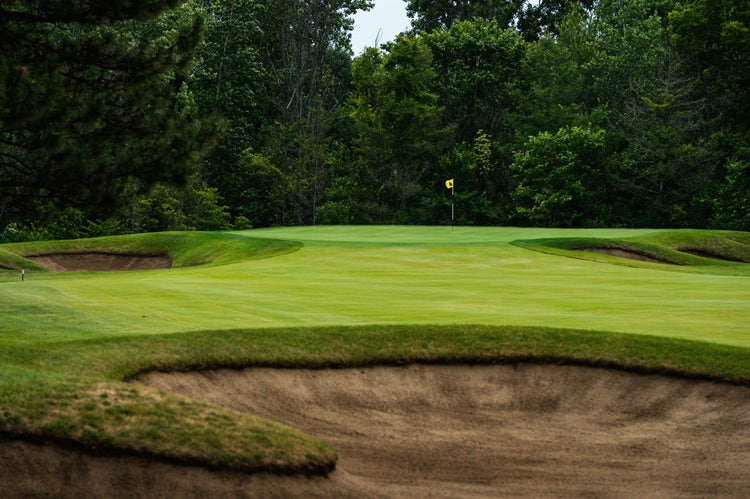
HOLE #2
This hole is a dogleg right, slightly downhill and can play as a drivable par 4. The green sits perpendicular to the fairway and has 2 dramatic spines that divide it into 3 distinct areas. A deep bunker guards the left side of the green, while the right side falls away sharply, demanding a very precise touch.
PHOTO BY MATT GARIES
Par 4
385 yards
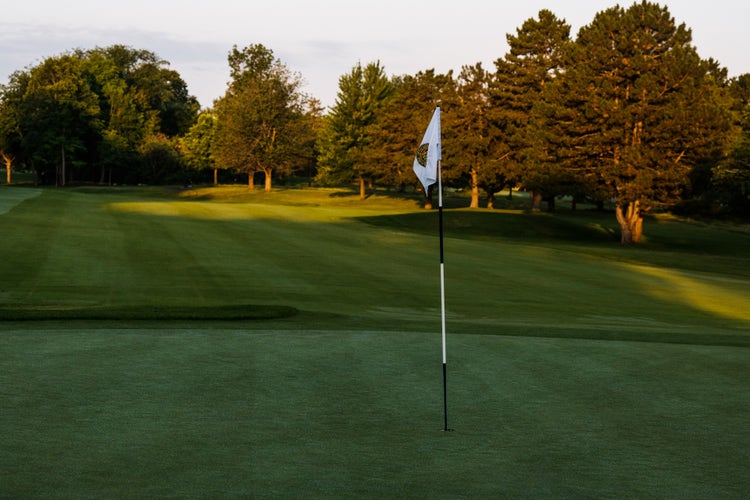
HOLE #3
This is a slight dogleg right hole. A well-placed drive still leaves the player with a demanding shot to the raised three-tiered green, which is protected by deep bunkers at the left and right front. The green falls away sharply at the back.
PHOTO BY MATT GARIES
Par 4
485 yards
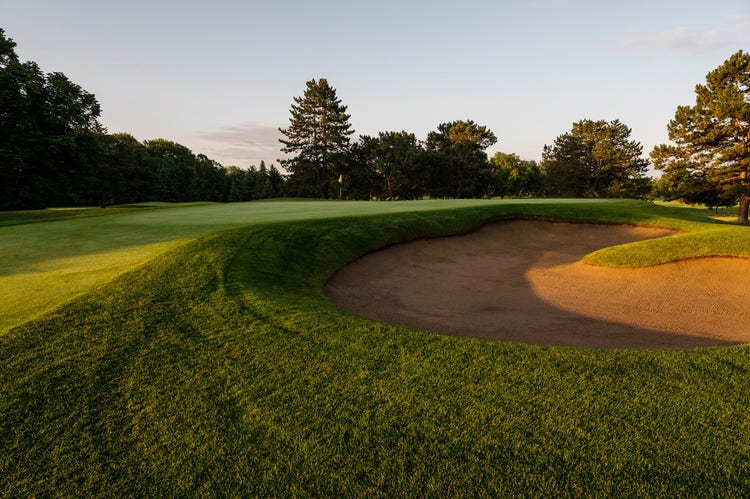
HOLE #4
This difficult hole is an uphill dogleg left with a very narrow tee shot landing area, protected on both sides by bunkers. The player is normally hitting into the prevailing wind. The green is kidney-shaped, narrow at the front and protected at the front left and right by bunkers.
PHOTO BY MATT GARIES
Par 4
501 yards
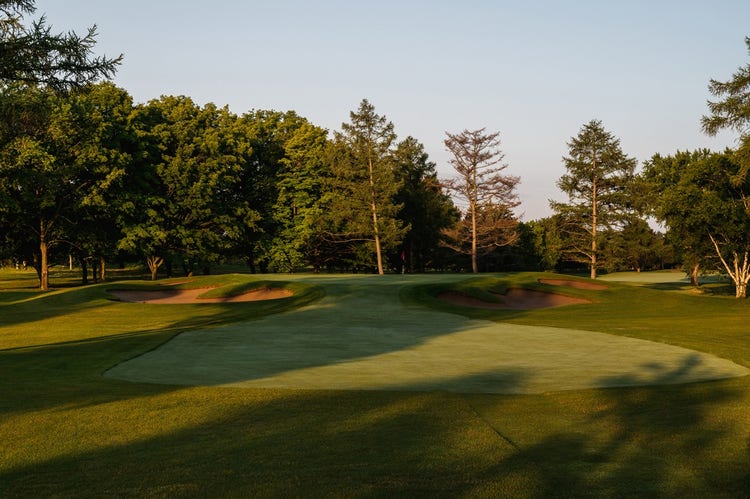
HOLE #5
This is a very demanding par 3 that requires a very precise shot to another elevated kidney-shaped green. The pattern continues with the front portion of the green being very narrow. It is well protected by deep bunkers at the front left and right and has a pronounced spine through its left and center sections.
PHOTO BY MATT GARIES
Par 3
227 yards
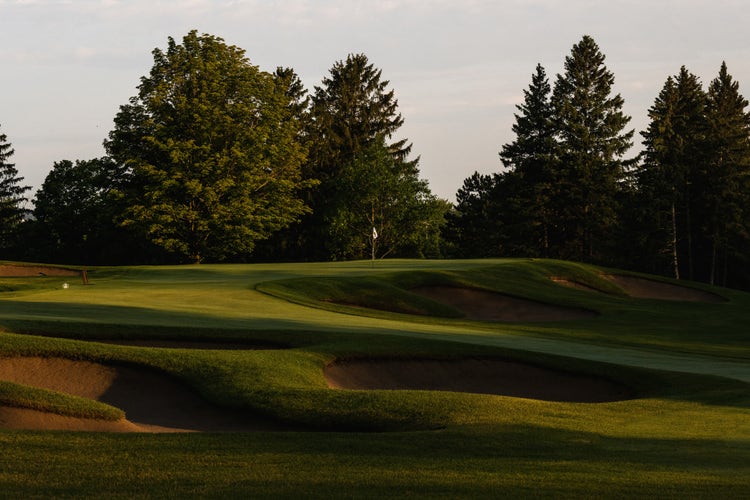
HOLE #6
This is the lone par 5 on the outward nine for the usual routing and one of only two on the Blue Course. There is the potential to hit the green in two, but the prevailing wind is generally into and/or slightly across the player's face. The hole is a dogleg right with a generous tee shot landing area that is bunkered on both sides. The green is large and angled to the fairway. It sits on a plateau with two very deep bunkers at the front and a series of bunkers along the back. The green is relatively flat, but has a demanding putting surface with a number of distinct areas.
PHOTO BY MATT GARIES
Par 4
325 yards
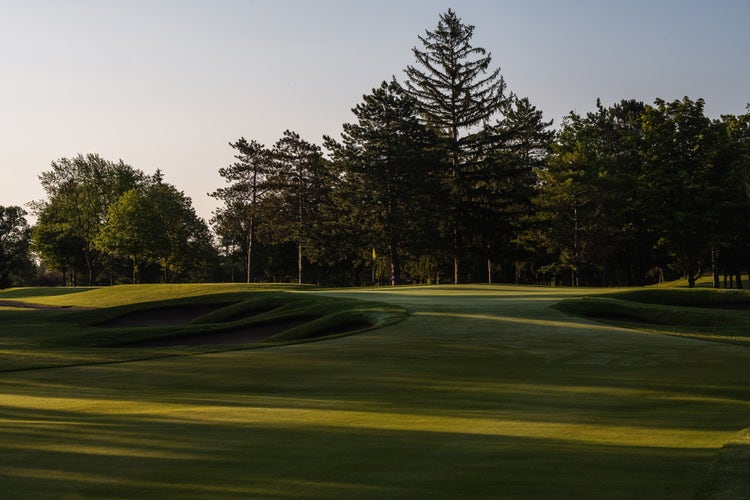
HOLE #7
This is a deceptively short par 3. The player does not want to miss this small, well-bunkered green as they will be faced with a difficult shot from deep bunkers that protect both sides of this narrow green or be left with a challenging flop shot.
PHOTO BY MATT GARIES
Par 3
153 yards
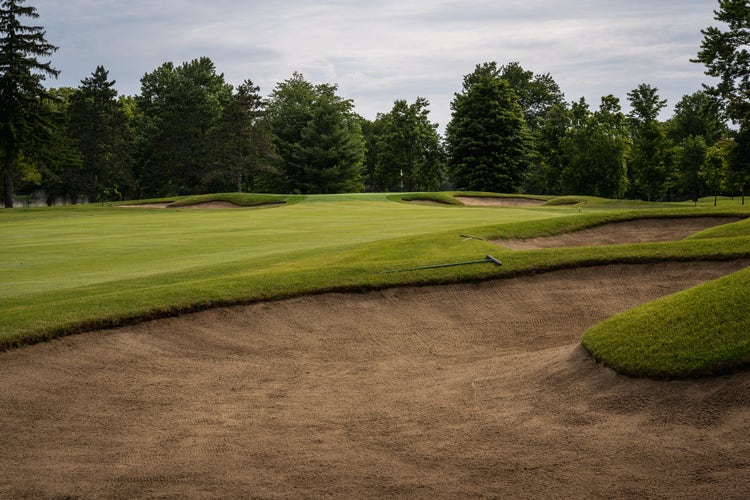
HOLE #8
This is a short, downwind hole with a dogleg left layout and a very generous landing area. This green departs from the kidney shape of most previous greens; it is round and much of the surface is not visible from the area that most players will be hitting their approach shots.
PHOTO BY MATT GARIES
Par 4
425 yards
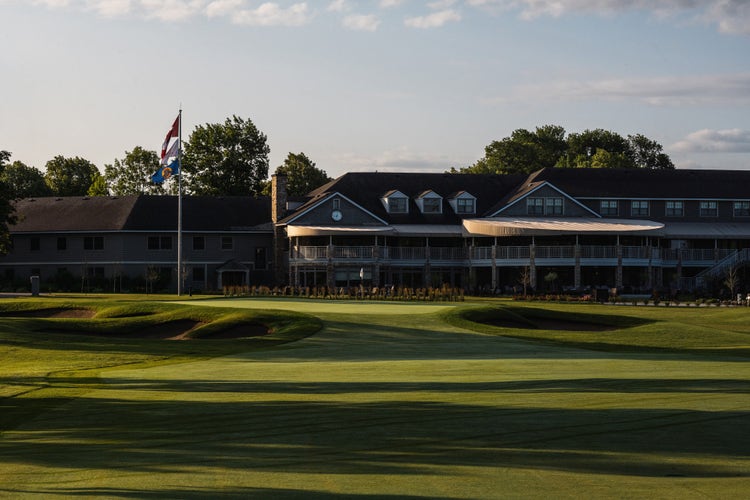
HOLE #9
This hole leads back to the clubhouse and is a slight dogleg left. The tee shot landing area is bunkered on the left side, requiring a 320-yard carry. The green is elevated, narrow at the front and guarded by deep bunkers on both sides. The green has a pronounced spine from the middle of the back to the center. If the approach shot is not in the same quadrant of the green as the pin, a birdie is highly unlikely.
PHOTO BY MATT GARIES
Par 4
437 yards
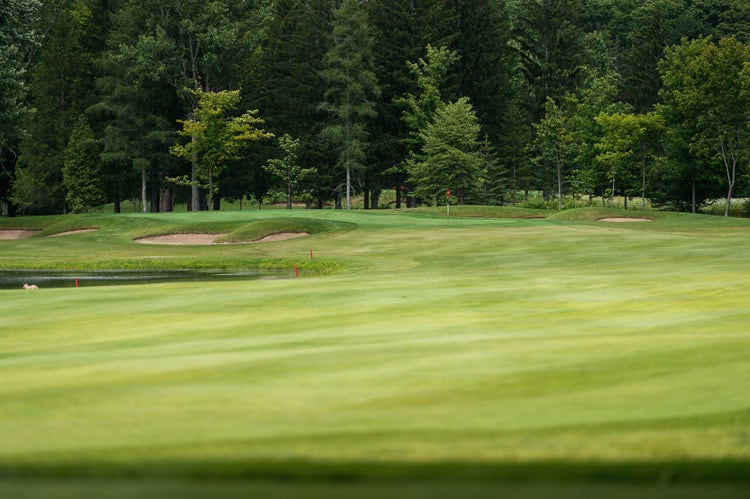
HOLE #10
A large pond comes into play down the left side of this hole, starting at 160 yards out from the green and continuing all along from there. The right side of the hole is tree-lined from the tee to the green. The green is situated on a front-right to back-left axis with a waterfall style surface, featuring three separate areas that increase in height from the front to back plateaus.
PHOTO BY MATT GARIES
Par 4
454 yards
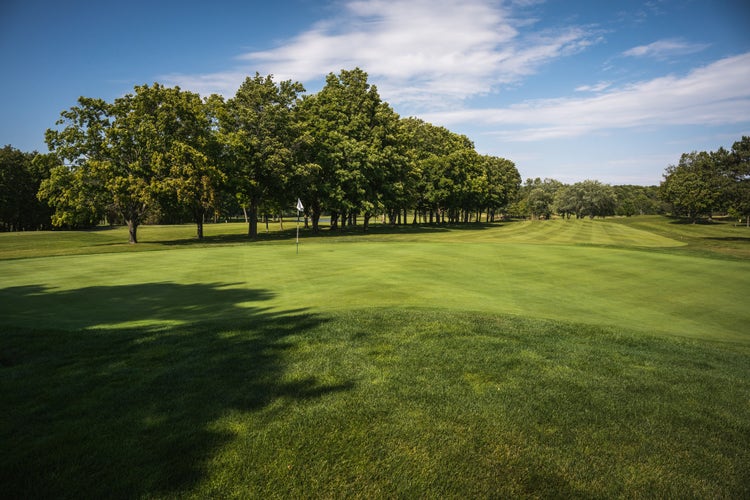
HOLE #11
This is an uphill hole with a slight dogleg right. There is a bunker on the right side of the fairway requiring a carry of 260 yards. The right side is also treed from the tee to the green. A very strong fairway bunker turns the hole on the left side at 310 yards. This hole will play at least the full yardage, as the prevailing wind is into the face of the player and most drives will be hitting into a gradual slope. The green is narrow at the front, well-bunkered on both sides and has a spine from the back through the middle, making it essential for an approach shot to be in the same area as the pin.
PHOTO BY MATT GARIES
Par 4
483 yards
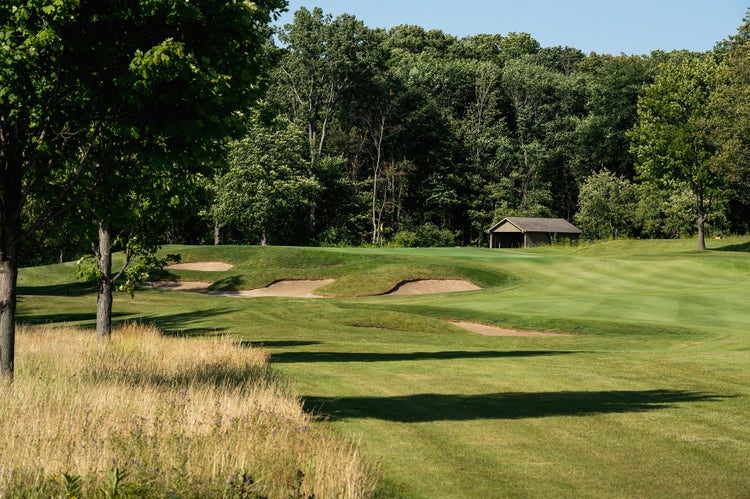
HOLE #12
This par 5 plays slightly downhill and most often downwind. The landing area is generous and protected on the left side by a carry bunker at 280 yards, and on the right by a series of bunkers at 290 to 320 yards from the tee. The hole turns to left from the landing area. The fairway dips from this point, rising to a distinct plateau at the green. The hole is reachable in two, but is protected on the left side by step bunkers and has a strategic collection area on the right side. The green moves sharply from back to front and away from the collection area. Any pin location on the right side of the green will require a cautious approach.
PHOTO BY MATT GARIES
Par 5
560 yards
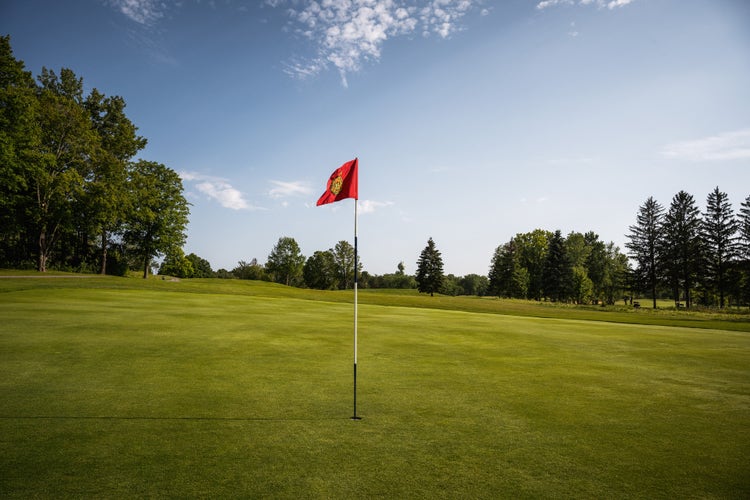
HOLE #13
This downhill par 3 is backed by a stand of mature Sugar Maples. The green has three distinct plateaus with very demanding back pin positions. The front of the green is narrow and well bunkered on both sides.
PHOTO BY MATT GARIES
Par 3
224 yards
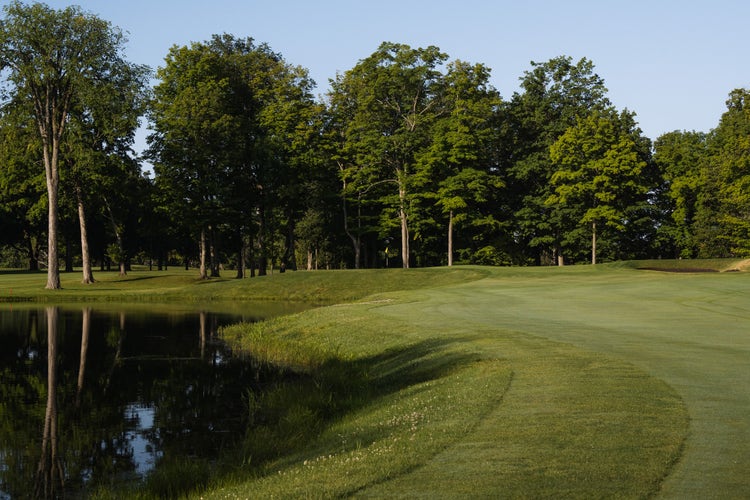
HOLE #14
This hole has a large pond on the left side of the fairway which stretches from the green halfway back to the tee. The right side of the fairway has a mature Maple forest from tee to green. The fairway narrows in to a very tight landing area that is bunkered on the right side. Most players will lay up off the tee with a mid to long iron. The green is very narrow with three very distinct sections, with water a factor all along the left side. The front portion of the green is very small and bunkered on the right. This hole can be played from 300 yards, making it a drivable par 4.
PHOTO BY MATT GARIES
Par 4
400 yards
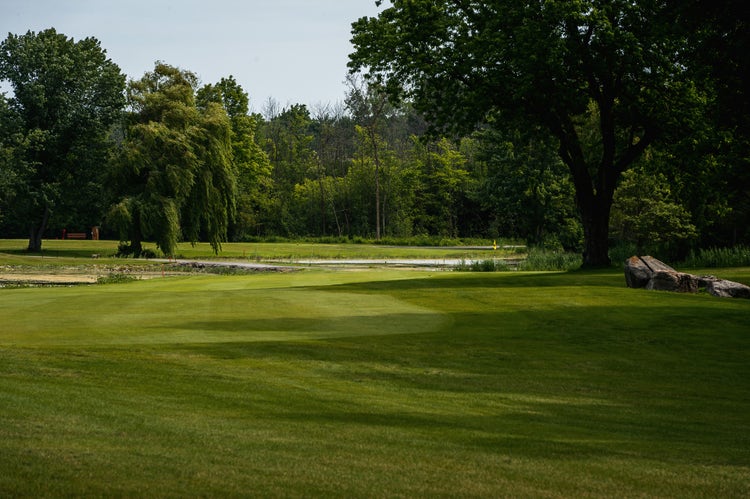
HOLE #15
This hole also has water in play, as a large pond is located in front of and around the left side of the green as well as along the left side of the fairway. A driver may not be the choice off the tee as players will select a club to get them to the best angle for their approach shot to the green. The green is long and narrow with a pair of bunkers on the right side and a pot bunker on the back left between the green and the pond. The back pin placement will sit on a very small plateau and will only be attacked by the most confident players.
PHOTO BY MATT GARIES
Par 4
448 yards
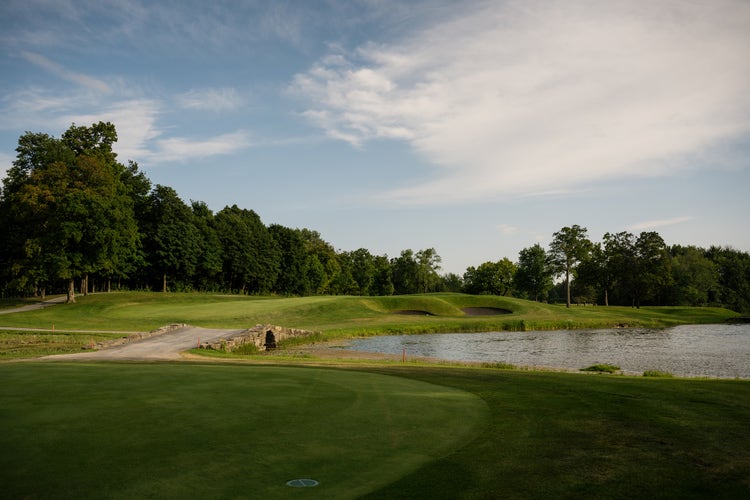
HOLE #16
The hole has a large pond all along the left side. Again, a driver may not be the choice off the tee as accuracy is essential, particularly at this point in the round. The second shot is played over water to an elevated green which is protected on the right side by an intimidating, ‘monster’ bunker with a collection area on the left.
PHOTO BY MATT GARIES
Par 4
458 yards
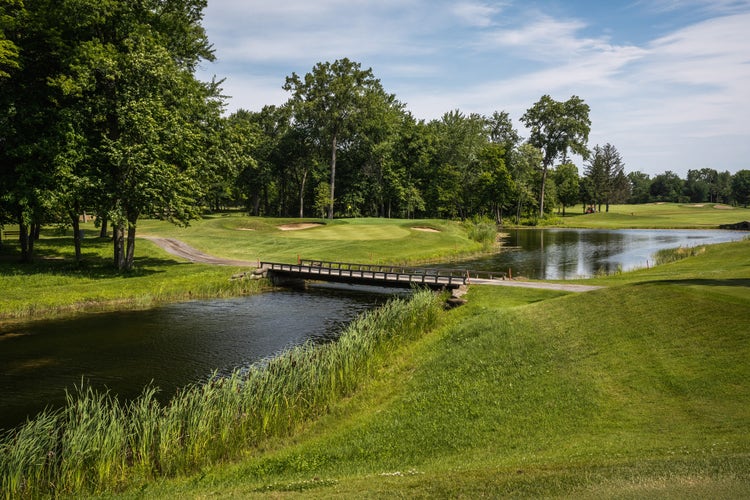
HOLE #17
The tee shot is played over a pond that extends down the right side of the green and beyond. The prevailing wind will be a factor as it blows across this hole towards the pond. There is no room for error between this narrow green and the water. The green is bunkered on the left side and has a spine through the middle from back to front.
PHOTO BY MATT GARIES
Par 3
157 yards
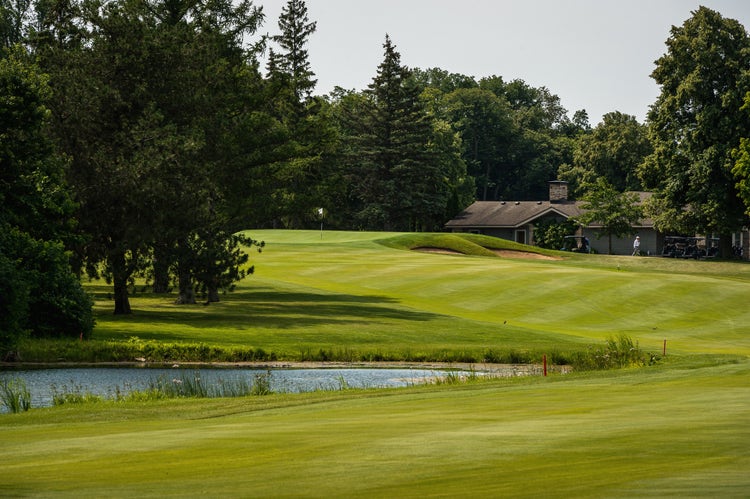
HOLE #18
This is a very strong hole that plays to the most challenging green on the Blue Course. Water is a factor off the tee and all down the left side. The tee shot landing area is narrow and bunkered on the right. Only the longest of hitters could consider driving the pond, and only with a favorable wind. The green is elevated with a front left to back right configuration. The back plateau of the green is small and relatively flat; however, the front portion of the green has a steep slope forward which is defended by an imposing bunker. There is no room for error with the approach shot to this green.
PHOTO BY MATT GARIES
Par 4
466 yards